An electrical wire underground generally works best for outdoor electrical projects. This essentially provides power to your garage, shed, light fixtures, electric gate motor, and many other applications!
Ensure that you meet all the requirements before installing the underground wires. This article provides a basic overview of the different types and how to install these wires. So let’s take a look!
Table of Contents
- What Is An Electrical Wire Underground?
- What Are The Underground Electrical Wire Types?
- Solid or Stranded Wire Type
- Underground Electrical Conduit Requirements
- Installing Electrical Underground Wiring
- FAQs
- Summary
What Is An Electrical Wire Underground?
As the name implies, an electrical wire underground refers to a cable buried in an underground trench. These have more durable qualities vs. other outdoor cable types.
In that case, they won’t sustain damage from varying temperatures, moisture, soil, and water exposure. Highly durable types come with armor, offering protection against rodents.
An underground electrical wire is applicable for outdoor sprinkler systems, power lines, post lights, and much more.
What Are The Underground Electrical Wire Types?
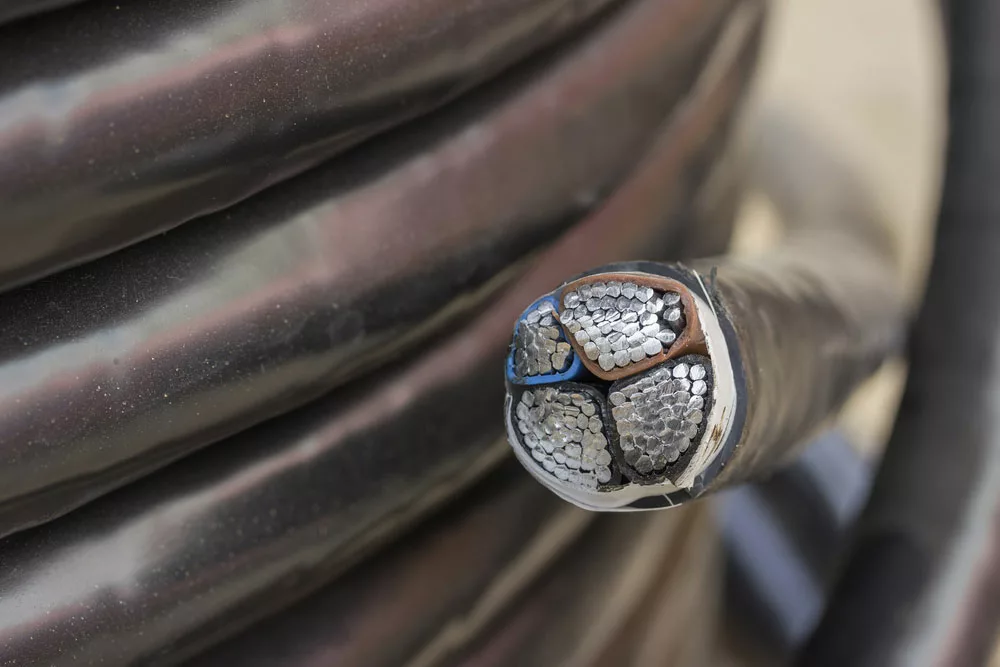
Example of an underground electric cable.
The trace wire, UF-B underground feeder, and USE-2 are popular options for underground wiring solutions. Of course, you must choose the correct one for your project and install it safely.
Tracer Wire
Utility industry professionals use tracer wire to detect the presence of underground pipes and cables. These include gas, water, and fiber optics. Tracer wires have HMWPE waterproof polyethylene insulation with highly resistive abrasion properties.
UF-B Underground Feeder
The UF-B cable plugs into an indoor source, delivering power to outdoor projects, like light fixtures and equipment. It has soft bare copper conductors.
Also, polyvinyl chloride insulation protects it against sunlight, moisture, corrosion, grease, and fungus. You must bury the UF-B underground feeder cable 24 inches deep.
USE-2
The USE-2 cable is an underground power line that delivers electricity from a transformer to your home. This cable can endure extreme environments thanks to its rigid XLPE insulation and soft bare copper conductor.
Solid or Stranded Wire Type
Choose a stranded or solid copper conductor for the wire type you plan to install. The stranded version contains several wires bundled together and adapts its shape to curved areas. Meanwhile, the solid type features one conductor and can’t bend easily.
Underground Electrical Conduit Requirements
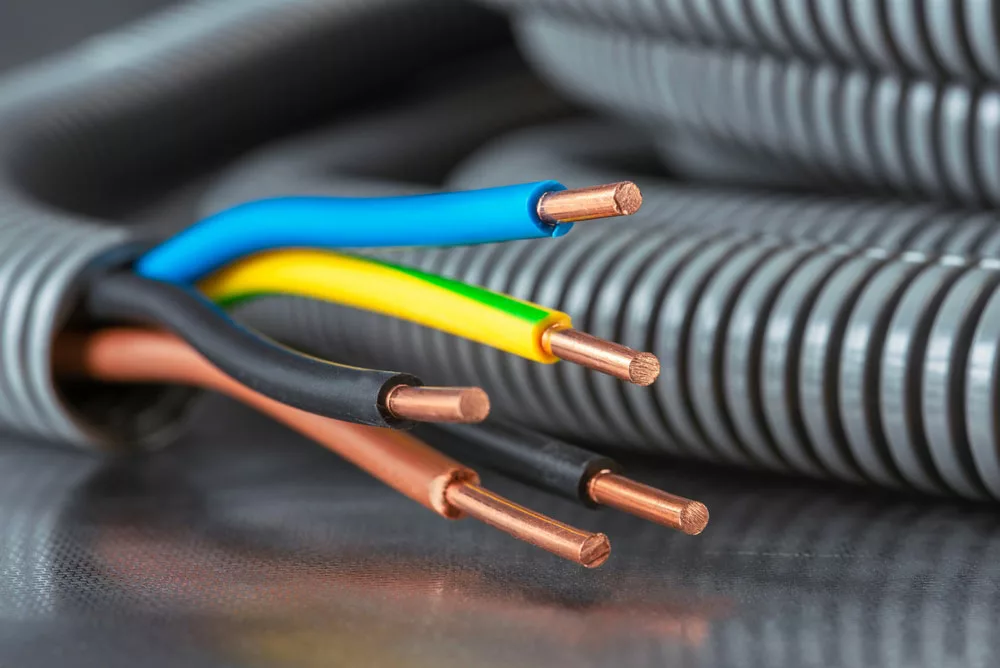
Electric wire conduit in a pipe.
You must place the wires in rigid metal conduit, Schedule 80 nonmetallic conduit, or intermediate metal conduit. These protect the wire against natural elements, including moisture, rain, and sunlight.
Additionally, wires in conduit require an 18” deep trench. Ensure you verify requirements because the soil type, area, and varying circumstances affect how you install the wires in the conduit.
Installing Electrical Underground Wiring
Follow this guide to install underground electrical wiring. Take a look at the factors to consider before burying your cable!
Factors to Consider
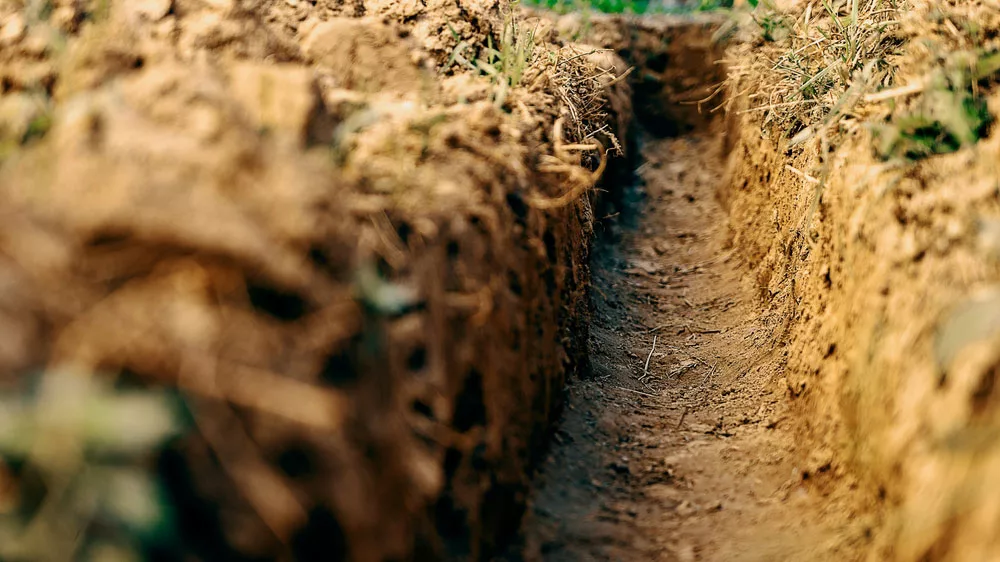
You may need to dig a trench at a certain depth for your wire installation.
First, consider the burial depth and wire type before installing your underground electrical wiring. Be sure to verify the correct depth by checking the national electrical code. Refer to the following choices for your project.
6 inches
Galvanized EMTs containing separate conductors can be buried 6 inches deep into the ground. This cable offers more durability because it won’t sustain damage.
12 inches
A GFCI-protected cable works best for a 12-inch digging depth. Install PVC at the wire’s exposure points.
18 inches
An 18-inch burial depth requires THWN-2 conductors with a PVC conduit. That way, your wire won’t sustain damage if digging occurs nearby or above. Essentially, THWN-2 provides waterproof qualities.
24 inches
An underground feeder cable is ideal for projects requiring a 24-inch burial depth. These will not need any conduit, but vertical feeds must have PVC conduit from 18 inches onward.
Installation Steps:
We also recommend utilizing PVC conduit for wire protection. Sometimes conduit may not be required so you can use a direct-burial cable instead. Make sure you tackle this project in the safest way possible!
Step One: Call “Before You Dig”
Call the “Before You Dig” number three days before digging and placing the underground electrical wiring. Local utility providers will get a heads-up about your underground wire installation.
From there, a representative visits your residence. Their job involves marking areas where underground electrical lines, sewage drains, and water lines run.
Generally, this helps you determine the depth at which you can dig.
Step Two: Dig Your Trench
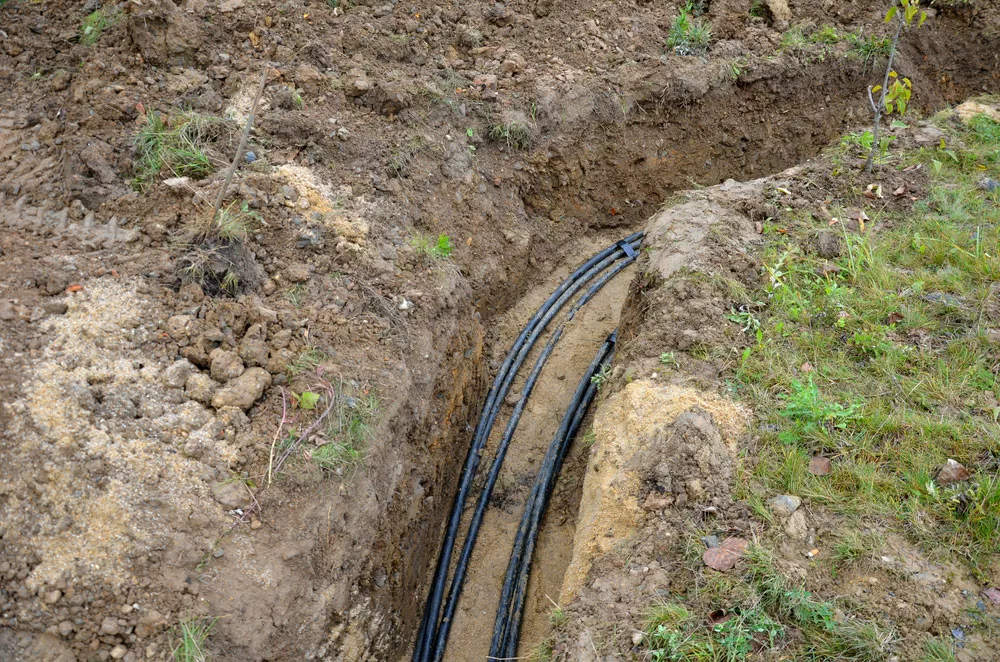
Electric wire in a trench.
The next step involves digging the trench. Depending on the depth, you will need to utilize different tools. Use a trenching shovel if you need to dig a few feet. A trencher is far more suitable for a deeper hole, helping save time in the process!
Step Three: Ingress and Egress Holes
Create ingress and egress holes with a PVC conduit outlet body. Ensure a hole goes at one end of the underground electrical wire run and the other at the opposite end (electrical panel). You can move the wire through these holes and into your home.
Step Four: Push The Wire Through the PVC Conduit
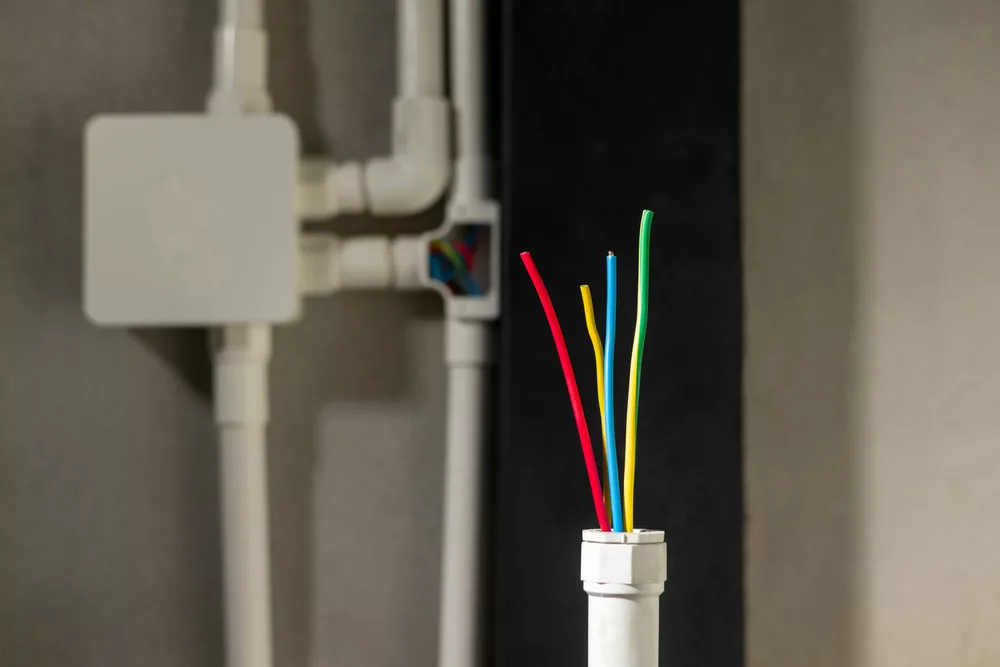
Wires sticking out of a PVC conduit.
Add some protection to your wires by installing a PVC conduit. A metal fish tape will allow you to pull them through efficiently.
Step Five: Complete the Connections and Conduit
Connect the wires to your electrical panel and screw the plates onto the PVC conduit outlet.
FAQs
Is conduit essential for an underground electrical wire?
Generally, you can bury electrical wires without a conduit. Some already have protection against natural elements.
Which code applies to burying electrical wire?
Electrical wire burial utilizes the NEC 300-5 code. This means you must bury the wires no less than 24 inches.
At what depth should you bury the electrical wires?
According to the National Electric Code (NEC), you should bury underground feeder electrical wires in a conduit at 24 inches or more. Leave the trench unburied for the inspector’s approval before proceeding.
Summary
Overall, underground electrical wires are extremely useful for indoor to outdoor power distribution. However, the application will require the correct wire type for that project. Thanks to their outer sheathing protection, you can also expect them to last long.
Do you have any questions regarding underground electrical wires? Feel free to contact us!
